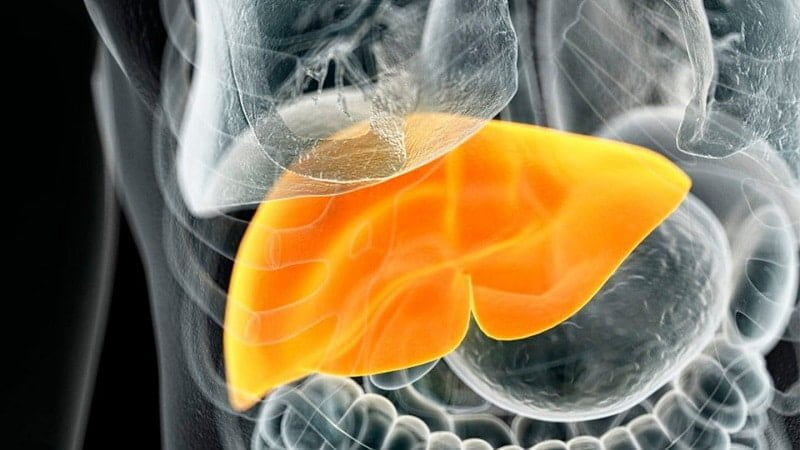Many people live with diabetes and liver disease at the same time. These conditions interact in ways that raise cardiometabolic risk, complicate medications, and change nutrition needs. Understanding the connection helps you plan safer treatment and follow-up. This guide uses plain language with clinical terms and practical steps.
Key Takeaways
- Shared mechanisms: insulin resistance and inflammation drive liver fat and fibrosis.
- Screening matters: simple scores and imaging find silent disease early.
- Medication safety: some agents help liver fat; others need caution.
- Nutrition first: weight loss and an evidence-based eating pattern reduce risk.
Diabetes and Liver Disease: How They Interact
The liver regulates glucose storage and release. In insulin resistance, the liver makes excess glucose and accumulates fat. This combination worsens glycemic variability and increases cardiovascular risk. Over time, chronic fat accumulation may trigger inflammation and scarring.
Hepatic insulin resistance reduces suppression of gluconeogenesis (glucose production). Lipotoxicity and inflammatory signaling worsen beta-cell stress, creating a feedback loop. In advanced fibrosis or cirrhosis, impaired metabolism alters drug handling and raises hypoglycemia risk. For a patient-friendly overview of the overlap, see Diabetes And Liver Disease Explained for context and definitions.
Several professional groups now emphasize risk-based screening in type 2 diabetes because prevalence of fatty liver is high. For current clinical direction, the AASLD guidance outlines noninvasive tests and referral thresholds.
Conditions You’ll See: Fatty Liver, Cirrhosis, and More
Nonalcoholic fatty liver disease (NAFLD), recently termed MASLD, is common in type 2 diabetes. Many people have no symptoms, yet fibrosis can progress silently. Clinicians often detect mild enzyme elevations or steatosis on imaging. Early identification allows lifestyle and cardiometabolic therapies to slow or reverse disease in many cases.
Some individuals report vague right upper quadrant discomfort or fatigue. Others present with fatty liver diabetes symptoms such as mild abdominal discomfort, persistent tiredness, or incidental ultrasound findings. Advanced fibrosis may cause edema, easy bruising, or variceal complications. When you suspect progression, involve hepatology early to guide staging and surveillance.
NAFLD/NASH
NAFLD spans simple fat (steatosis) to steatohepatitis (NASH) with fibrosis. Weight reduction through caloric deficit and increased activity remains first-line. Pioglitazone may benefit biopsy-proven NASH in people with diabetes when risks are acceptable. For context on thiazolidinedione data beyond glycemia, review Pioglitazone Benefits for evidence summaries related to metabolic endpoints.
Cirrhosis
Cirrhosis reflects advanced scarring with altered hepatic blood flow and synthetic function. People with diabetes face higher risks of infections, renal dysfunction, and encephalopathy. Glycemic management becomes challenging due to reduced insulin clearance and malnutrition risk. Coordinate care with hepatology to balance glycemic targets and complication surveillance.
Glycogenic Hepatopathy
Glycogenic hepatopathy is a reversible condition seen mostly in type 1 diabetes with poor glycemic control. Rapid swings between hyperglycemia and insulin excess drive glycogen deposition in hepatocytes. Patients may have hepatomegaly, abdominal pain, and marked transaminase elevations. Stabilizing glucose variability typically normalizes enzymes and reduces liver size over weeks to months.
Screening, Symptoms, and Monitoring
Start with history, physical exam, and a diabetes and liver function test panel. Assess ALT, AST, bilirubin, alkaline phosphatase, albumin, and INR alongside platelets. Add a noninvasive fibrosis score such as FIB-4 or NAFLD fibrosis score. If intermediate or high risk, order elastography to estimate stiffness and steatosis.
Interpret abnormal results in context. Mild enzyme elevations are common in type 2 diabetes and often reflect steatosis, while distinct cholestatic patterns suggest other causes. Be alert to patterns seen in prediabetes with elevated enzymes, or in longstanding disease with thrombocytopenia. For foundational liver evaluation information, the NIH offers a clear overview of fatty liver assessment on the NIDDK website. You can also browse broader topics in Diabetes Articles to link comorbid care.
Metformin, GLP-1s, and TZDs: Liver Considerations
Use of metformin and liver disease requires nuance. Metformin does not cause intrinsic hepatotoxicity and often remains appropriate in stable liver conditions. However, in severe hepatic impairment or active alcohol misuse, the lactic acidosis risk increases and clinicians may avoid it. Consider renal function and hemodynamic status when deciding continuation.
GLP-1 receptor agonists support weight loss and may reduce liver fat, with emerging evidence for histologic improvement. Thiazolidinediones, particularly pioglitazone, can improve steatohepatitis in select patients. Discuss potential fluid retention and fracture risk. For mechanism summaries across classes, see Diabetes Medications Overview to align choices with hepatic considerations.
Note: Combination tablets such as metformin with sitagliptin may simplify regimens. For details on the DPP-4 plus metformin option, see Janumet Benefits for dosing formats and clinical context. If SGLT2 plus metformin is considered, review Synjardy Uses to match cardiorenal goals and safety.
Regulatory labeling underscores caution with hepatic impairment. For specifics on lactic acidosis warnings and hepatic contraindications, consult the metformin FDA label before making therapy changes.
Drug-Induced Injury: What to Watch
Most people tolerate diabetes therapies well, but rare injury occurs. Some agents appear on lists of diabetic drugs that cause liver damage, typically through idiosyncratic reactions. DPP-4 inhibitors and GLP-1 receptor agonists have rare case reports. Thiazolidinediones can raise transaminases in a minority and may exacerbate fluid retention.
Always check concurrent medications and supplements for hepatotoxicity. Statins are generally safe in fatty liver, but evaluate drug–drug interactions and baseline fibrosis. Reassess alcohol intake, acetaminophen dosing, and over-the-counter products. If liver enzymes rise unexpectedly, use a stepwise approach to dechallenge, monitor, and reintroduce under supervision.
When Liver Tests Rise: Practical Steps
Start with a focused symptom review and a timeline of medications and supplements. Ask about jaundice, dark urine, pruritus, abdominal pain, fever, and myalgias. Describe any nausea or malaise that might resemble metformin liver damage symptoms or nonspecific adverse reactions. Document alcohol intake, viral exposures, and recent imaging.
Repeat labs to confirm elevation and calculate a pattern (hepatocellular vs cholestatic). If ALT or AST rises more than three times the upper limit with symptoms, contact the treating clinician promptly. Consider holding the suspect drug and expand testing to autoimmune markers, viral hepatitis panels, and ultrasound. When uncertainty persists, refer for elastography or specialty input.
Nutrition and Weight: What to Eat and Avoid
Nutrition drives improvement in liver fat and insulin sensitivity. A Mediterranean-style pattern with calorie deficit supports weight loss and cardiometabolic health. Emphasize vegetables, legumes, whole grains, lean proteins, and unsaturated fats. Limit added sugars, refined starches, and alcohol.
Focus on practical swaps. People often ask about foods to avoid with fatty liver; start with sugar-sweetened beverages, high-fructose snacks, and large portions of processed meats. Encourage water, unsweetened tea, and fiber-rich meals. For structured meal ideas tailored to insulin resistance, explore Diet For Insulin Resistance to build weekly plans.
Tip: Aim for 5–10% weight loss over time. Even modest loss reduces liver fat and improves metabolic markers.
Complications and Prognosis
Metabolic liver disease interacts with vascular risk and kidney function. Decompensated cirrhosis complicates glucose control through variable insulin clearance, malabsorption, and sarcopenia. Episodes of high blood sugar and cirrhosis may alternate with hypoglycemia in advanced disease. Adjust targets individually, prioritizing safety and quality of life.
Prognosis depends on fibrosis stage, comorbidities, and complications such as variceal bleeding or ascites. People with coexisting diabetes and liver cirrhosis require coordinated surveillance for hepatocellular carcinoma and portal hypertension. For general patient information on cirrhosis progression and management, see the NIH’s cirrhosis resource. If frequent hypoglycemia occurs, review Fasting Hypoglycemia for causes and practical safety steps.
Care Pathways and Follow-Up
Map care to risk. In low-risk fatty liver, repeat noninvasive testing every 2–3 years alongside diabetes care. In indeterminate or high-risk scores, arrange elastography and consider hepatology referral. Coordinate vaccinations, bone health, and cardiovascular prevention within routine visits.
Match therapies to comorbid goals and hepatic status. When weight loss is needed, GLP-1 receptor agonists may help. If you are considering combination tablets, review Janumet Benefits for format options and Synjardy Uses for SGLT2 combinations that support cardiorenal risk. To keep learning, browse Gastrointestinal Articles for liver-focused topics that complement diabetes care.
Recap
The liver and glucose systems are tightly connected. Screen early, treat metabolic drivers, and use medications thoughtfully. Collaborate with hepatology when fibrosis or complications appear. Small, consistent steps in weight, diet, and monitoring can meaningfully change the trajectory.
This content is for informational purposes only and is not a substitute for professional medical advice.


